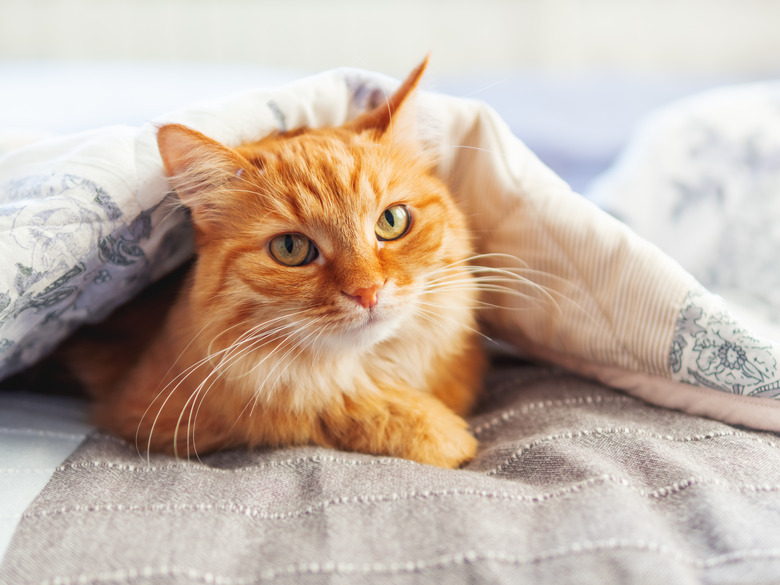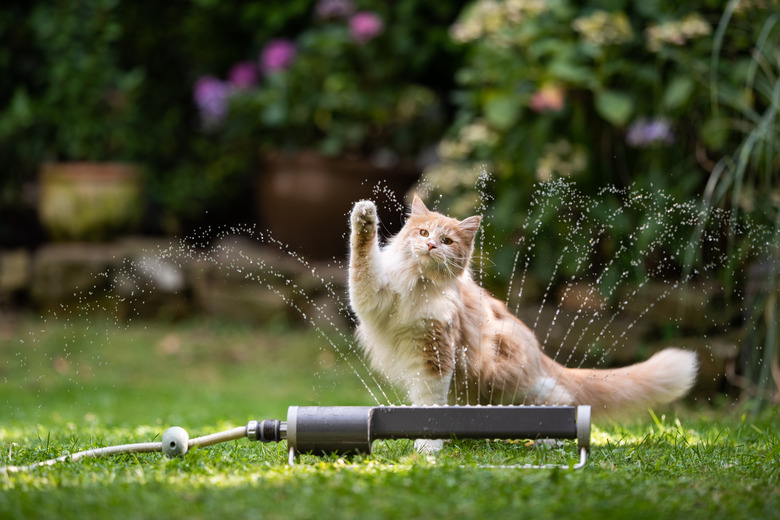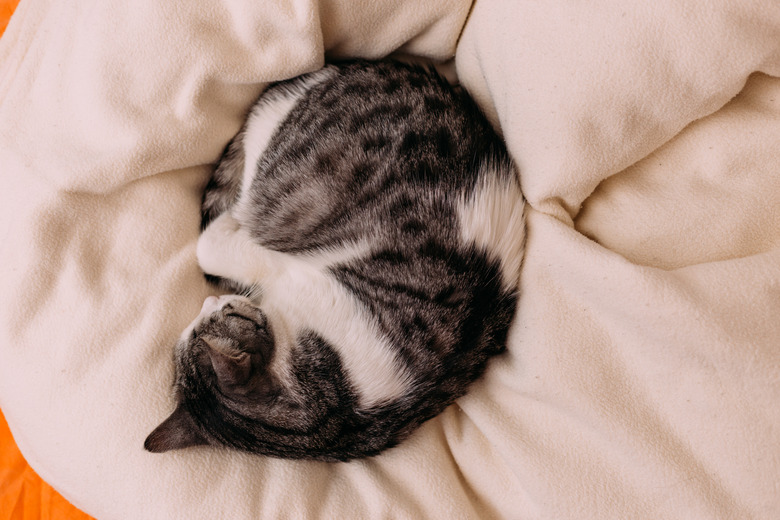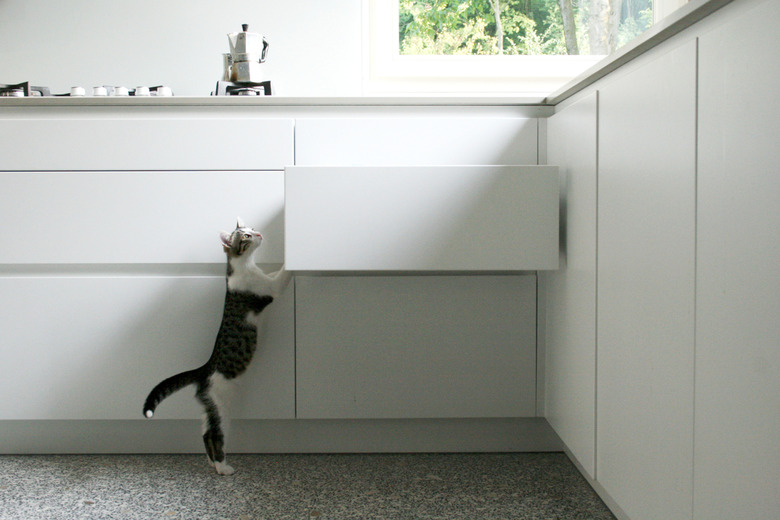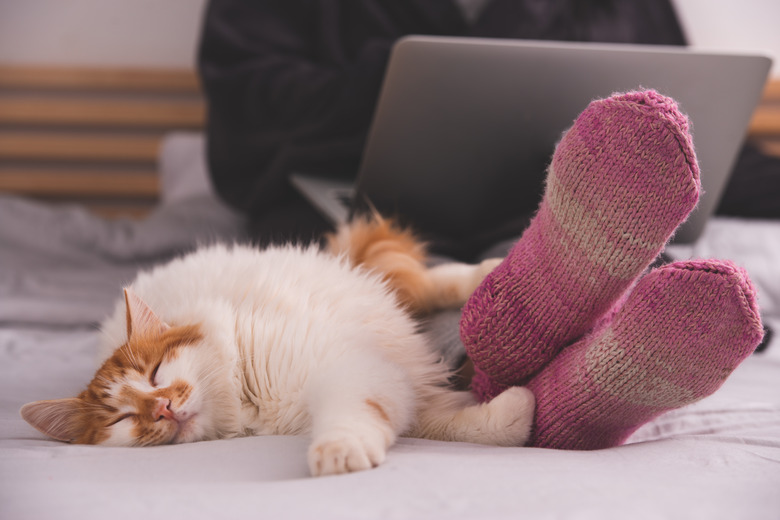9 Common Cat Myths Debunked
- Orange tabby cats are not as smart
- All white cats are deaf
- Cats hate water
- Cats always land on their feet
- Cats don't show affection
- Female cats should have a litter before being spayed
- Cats can't be trained
- A cat who shows you their belly always wants to be petted
- Purring always means a cat is happy
Cats are fascinating, intelligent, and agile creatures. It's perhaps our fascination with them that leads to some of the myths we might have heard about cats. They're also known to have unique and strong personalities. Every cat is an individual, for sure! In our efforts to understand them, it helps to pay attention to their body language, learn about their physiology, and respect their complex natures. That way, we can discern the myths from facts — and enjoy fulfilling relationships with our cats.
1. Orange tabby cats are not as smart.
1. Orange tabby cats are not as smart.
Color is not an indicator of particular cat breeds. Therefore, we can't assume much about a cat's behavior or intelligence based on their appearance alone. The color or coat type of a cat has little to do with their personality. However, it is true that roughly 80 percent of orange cats are male. That may be the reason they're often associated with being bold, affectionate, outgoing, and friendly.
It's possible some people mistakenly think a particularly gregarious cat isn't discerning or smart. Whatever the assumptions may be, there is no link whatsoever between a cat's color and their intelligence.
2. All white cats are deaf.
2. All white cats are deaf.
The color of a cat may have nothing to do with personality. However, with white cats, Gene W in their genetic makeup determines their coat color. Gene W, or the white gene, is also linked with congenital deafness. Therefore, it's true that white cats are more prone to deafness than non-white cats. Though they're more likely to be deaf when they have blue eyes as well. About 20 percent of white cats with non-blue eyes are born deaf. If the cat has one blue eye, the percentage rises to 40 percent. Around 65 – 85 percent of white cats with two blue eyes are deaf. So while the prevalence of deafness in white cats is worth noting, not all white cats will be deaf — especially if they don't also have blue eyes.
It's also important to understand that you can still train and communicate with your deaf cat through hand signals.
3. Cats hate water.
3. Cats hate water.
Because cats evolved primarily in dry climates, it's not natural for them to swim or like water. This will be particularly true in adult cats who have had negative experiences with water, either at the groomer or at home. Most domestic cats lack water-resistant coats. Therefore, they're not going to enjoy swimming, having wet fur, or bath time (which they don't typically need because they're so good at self-grooming).
Some cat breeds like the Turkish Van or Bengal, who are more related to wild cats, actually do enjoy swimming. And plenty of domestic cats have fun with running water or like to drink from faucets. A kitten who's had positive experiences with water from the beginning, (never being forced into it) is more likely to tolerate water.
4. Cats always land on their feet.
4. Cats always land on their feet.
Cats' innate ability to usually land on their feet is due to many physiological reasons. Cats have what's known as a "righting reflex." Anatomically, cats have no collarbones. But they do have flexible spines they can use to twist their bodies in mid-air — so they are able to land safely.
However, cats' ability to land on their feet is affected by the height of the fall and the cat's weight. A cat falling from great heights is actually more likely to land on their feet because they have more time to right themselves, especially once they've reached terminal velocity — and relax into the fall.
An overweight cat, no matter the height, is more likely to sustain serious injuries from a fall because their righting reflex and flexibility are inhibited.
5. Cats don’t show affection.
5. Cats don't show affection.
When we understand the body language of cats, it becomes obvious they have an abundance of ways that they show affection. They may not exhibit the same exuberance as dogs, but cats tell us they love and trust us through their behaviors. This includes purring, meowing, and paw kneading. In kittens, paw kneading behavior is part of nursing, and in adult cats, it's associated with comfort and relaxation.
Another less obvious sign of affection is when a cat butts or rubs their head on you. When they do this, they're conveying their scent onto you, which is their way of claiming "ownership" of you. They also use eye contact, and slow blinks, to express love and trust.
You can even tell your cat you love them by slowly blinking back! Some other forms of affection include just being near you: following you around, sleeping close to you, greeting you, walking between your legs, and even grooming you.
6. Female cats should have a litter before being spayed.
6. Female cats should have a litter before being spayed.
Ideally, a kitten should be spayed between eight weeks of age to five months of age. Spaying a cat before her first heat cycle can eliminate behaviors like urine spraying and howling.
There are also health benefits of spaying your cat while they're still young. This includes a lower risk of mammary cancer and diseases of the uterus and ovaries. Some reasons for the myth that cats should have at least one litter are that they will become overweight otherwise, or that their personalities will change. In reality, a spayed cat is less likely to experience hormone-related moodiness and physical discomfort.
Spaying and neutering our cats is extremely important to reduce the number of unwanted cats killed in shelters every year.
7. Cats can’t be trained.
7. Cats can't be trained.
The potential to train your cat is limitless! With positive reinforcement, they can learn everything from using the litter box to fun tricks and obedience skills. Training can also address behavioral problems like scratching furniture. Plus, training your cat is a bonding activity and provides them with much-needed mental stimulation.
The key to successful training is finding out what motivates your cat and using both "low-level" and "high-level" rewards. Punishment, negative reinforcement, or aversives are only going to cause your cat to be fearful and stressed. These should never be part of pet training.
If you make the effort to understand why your cat behaves in certain ways (and you reward them for behaviors you want) they will learn quickly.
8. A cat who shows you their belly always wants to be petted.
8. A cat who shows you their belly always wants to be petted.
We might be used to our dogs rolling over and showing us their belly, and plenty of them enjoy it. Cats, however, typically roll over for different reasons. For instance, if a cat is feeling defensive, they'll roll over (not to show their bellies) but to show their teeth and claws — ready to fight. Alternatively, they may be in major relaxation mode and enjoying a good stretch. Though that does not mean they want a human hand reaching for them!
Another time they likely don't want to be touched when they rolled over, is if they are in heat or they are not spayed. Some cats will show their belly as a sign of trust. But that doesn't always mean they're asking for petting. You likely already know if your cat enjoys it when you rub their belly. But most cats would prefer having their chin or the areas around their ears scratched.
9. Purring always means a cat is happy.
9. Purring always means a cat is happy.
Any cat lover is familiar with the soothing sensation and shared contentment when a cat is purring in their lap. Of course, cats purr when they're happy. There are other reasons, though, for this unique vocalization. Kittens begin purring when they are just a few days old. Their purring communicates to the mother where they are and that they're okay.
As they grow up, they purr in a variety of situations, even when alone. One reason for this may be that it promotes healthy bone development due to the frequency of the vibration! Sometimes a cat will purr in a stressful situation or new environment. Cats may even purr when injured — as a means of self-soothing.
